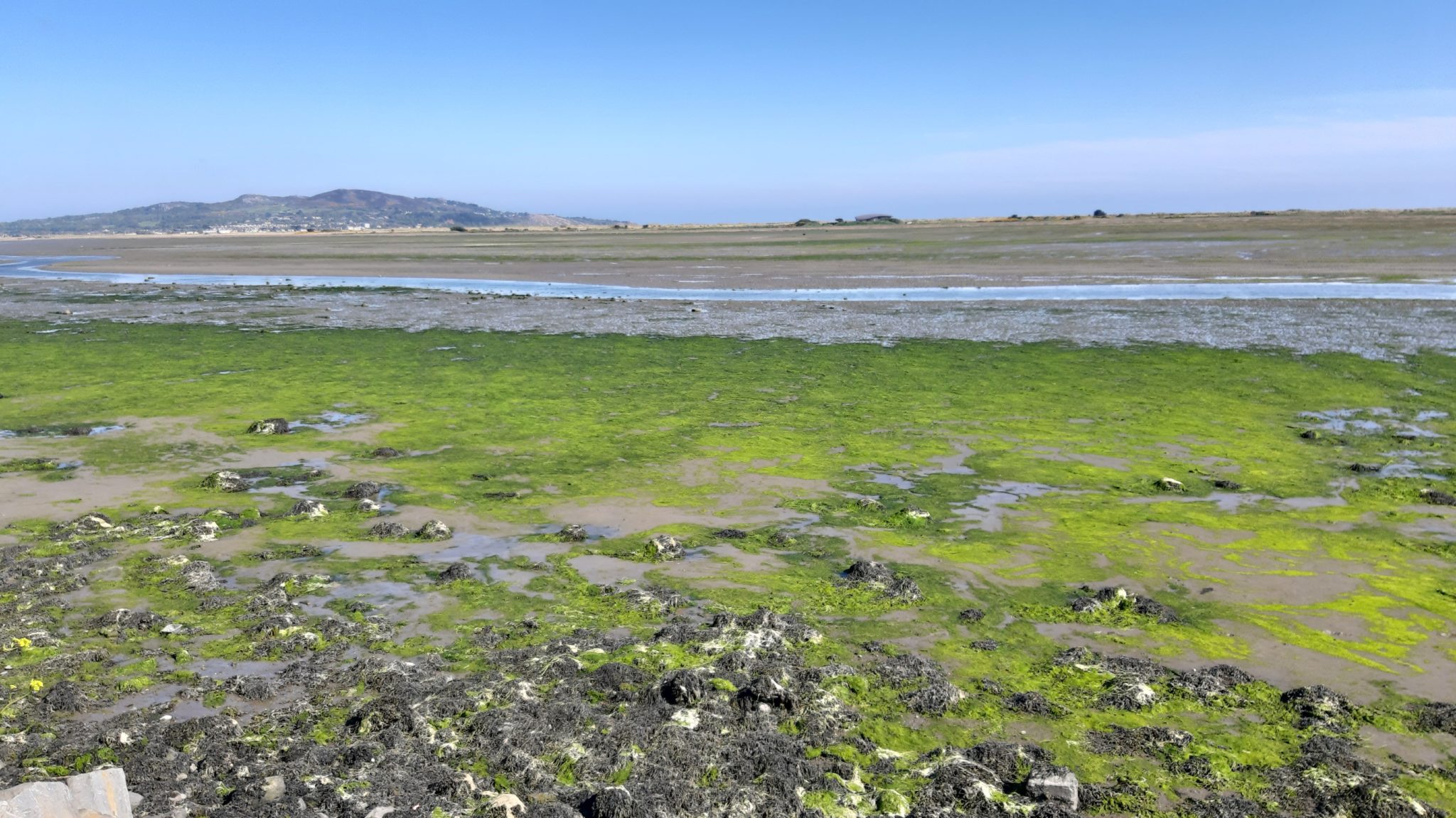Resilience 7/7 Forty Shades of Green
I close my eyes and picture the emerald of the sea
From the fishing boats at Dingle to the shores of Dunardee
I miss the river Shannon and the folks at Skibbereen
The moorlands and the midlands with their forty shades of green
……………………
Johnny Cash, probably wasn’t picturing this when he penned Forty Shades of Green in 1961 –
This picture shows green blankets of seaweed known as sea lettuce. This effect appears to occur when nutrients from a variety of sources like human waste products – including sewage and agricultural runoff, flows into the sea causing this increased level of growth. The whole of Dublin Bay is an extremely important international site for waterfowl. Populations of Oystercatcher, Redshank, Ringed Plover and Dunlin are continuously present, although they frequently travel between the south and north bay.
And while these green blankets or tides are not harmful to humans, the growth of sea lettuce can cause problems for marine activity such as navigation, fishing and leisure activities. Of course we don’t see many of these activities at the moment during this COVID-19 lockdown. So it’s not a big problem for us. However, when the sea lettuce dies it can reduce oxygen levels in the water and this has an effect on the marine life.
Managing the inputs to the coastal areas is also part of resilience in a city. How we manage our water and wastewater, and strategies for urban green infrastructure – can all play a role in reducing adverse impacts on all aspects of our environment.

